Mary Beth Willard (Weber State) offers pseudo-live-blogging/recap/latergram of
the Art Rules Conference, Day 1
Most people know Salt Lake City as “weren’t the Olympics there in 2002?” and some people after mine own heart know it as “Isn’t that the city where Scully was going to be banished in the first X-Files movie?”, but what they don’t know is that the art community in Salt Lake is so generous that the Art Rules: Aesthetic Reasons, Norms, and Standards (May 19-20) conference was held inside of the Utah Museum of Contemporary Art for free.
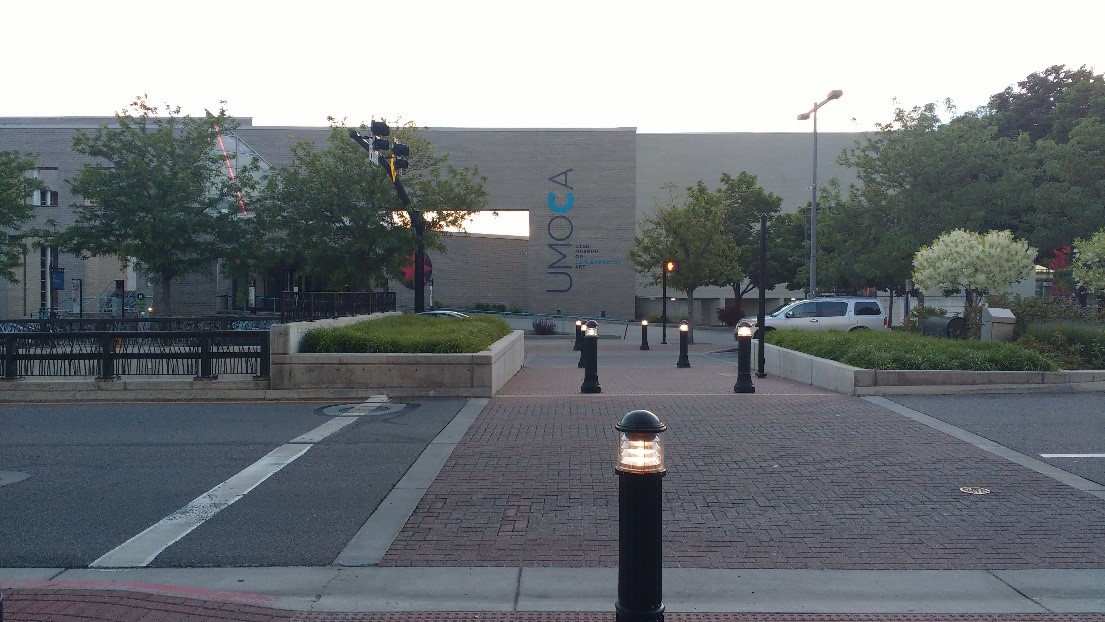
An aesthetics conference in an art museum! No one tell them this isn’t a thing.
The conference, organized by C. Thi Nguyen and John Dyck focused on aesthetic normativity. Here they are, introducing the conference, and v. importantly, giving us the WiFi password.
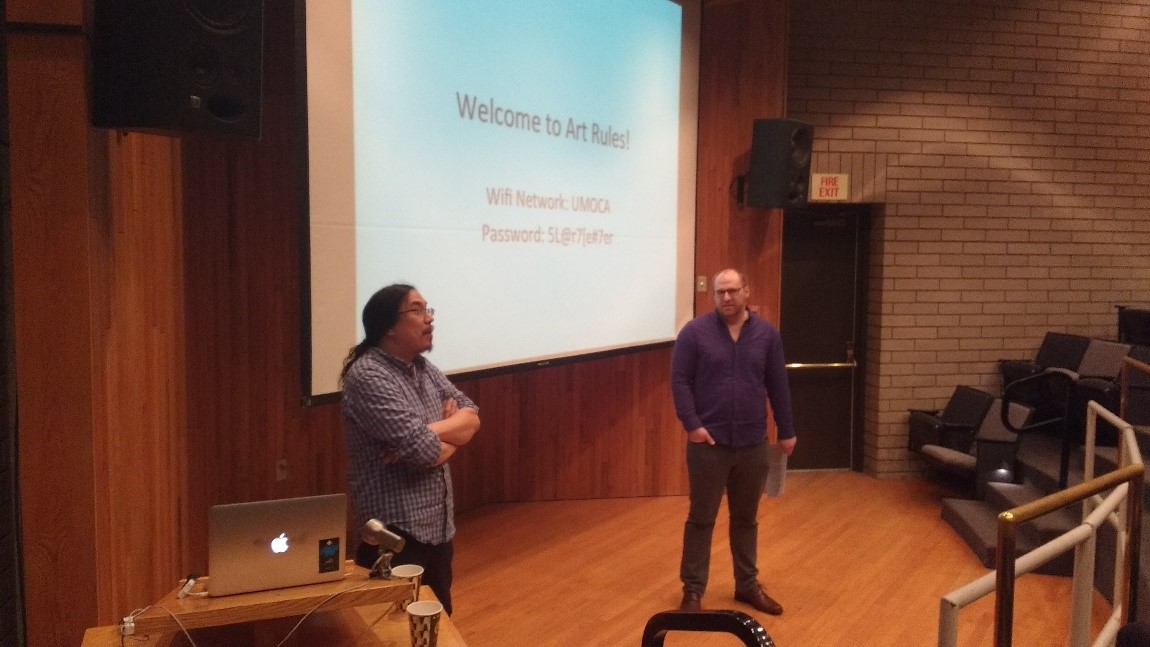
Aesthetic normativity concerns (as the conference subtitle suggests) aesthetic reasons, norms, and standards. Historically, this question focuses largely on a curiosity of aesthetic judgment. If I remark, “That sunset is beautiful!”, I am expressing more than my mere opinion. I’m inviting or suggesting or supposing that anyone who sees the sunset should agree that it is beautiful – I’m (arguably) setting a norm about how to experience sunsets. But there are more questions that concern our reasons for engaging art, how we should engage art, and what standards we should adopt when we evaluate art.
In short, at this conference philosophers took up a variety of questions about “shoulds.” Brief recaps below:
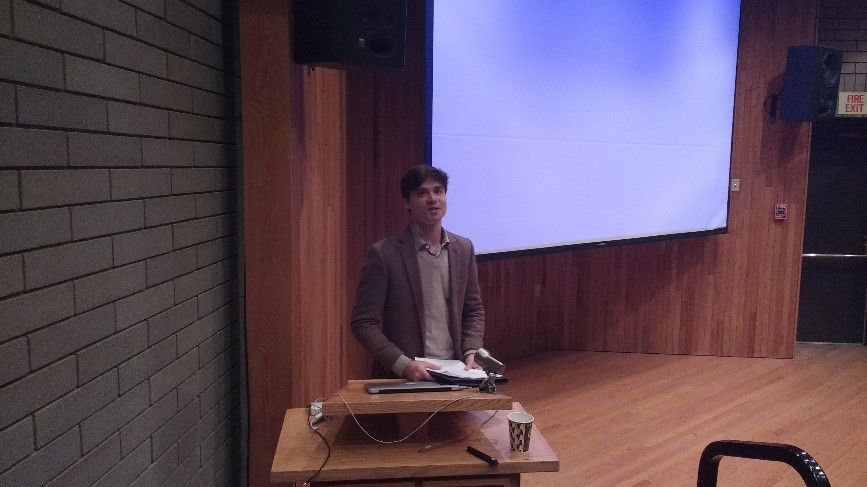
Robbie Kubala’s paper (pictured above, “Grounding Aesthetic Obligations”) kicked off the conference. Robbie explored whether the apparent obligation to have aesthetic experiences can be genuinely normative. How should we think about promises to “…go out into the countryside to see the first hawthorns” or rules to “…read some poetry and listen to some music at least once every week?” If there are such obligations, he argues, they must be grounded in self-promises, as part of the construction of our practical identities.

It turns out that hawthorns in bloom are very striking.

María José Alcaraz León (pictured above, “The Normativity of Aesthetics & the Communicability of Aesthetic Content”) presents a novel and most intriguing proposal concerning aesthetic normativity:
- Aesthetic experiences present us with perceptual content which we sense as ordered.
- Because we experience it as ordered without reference to principles or rules, our experience of the perceptual content is non-conceptual.
- We derive aesthetic pleasure from contemplating the experience that we perceive as ordered.
- Our appreciation specifies the way a particular object is experienced, and so is the source of the communicability of our experience.
A lively discussion ensued on the nature of that communication, and the possibility of clever fakers who pretend to have aesthetic experiences.
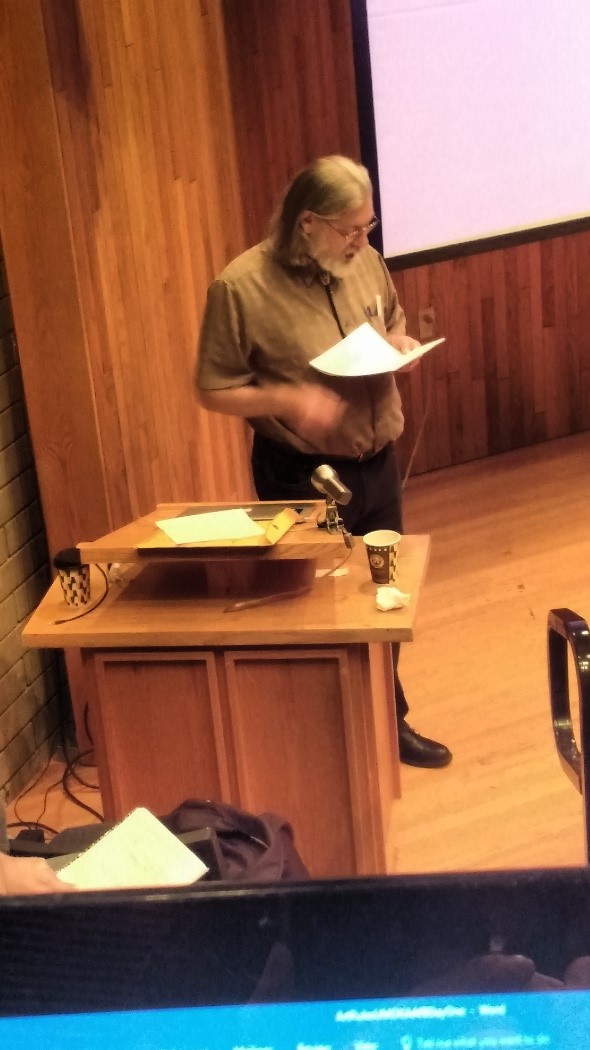 Then, lunch break, where many of us went to Settebello, and Matt Strohl gave an impassioned aesthetic analysis of the woodfired pizza, and talked up the virtues of the pizza steel for the home cook.
Then, lunch break, where many of us went to Settebello, and Matt Strohl gave an impassioned aesthetic analysis of the woodfired pizza, and talked up the virtues of the pizza steel for the home cook.
Ted Gracyk (pictured left, “The Futility of Evaluative Neutrality”) argued against evaluative neutrality, an attitude of forced neutrality in musicology that mean, among other things, that musicologists don’t tell us what they thought of the music. According to Ted, evaluative neutrality results from incorrectly distinguishing explanations of taste from aesthetic properties, and an over-reliance on non-cognivitist analyses of the aesthetic judgment.
He also observed that heavy metal is not a Waltonian category of art, and that the chief problem with studying Kenny G or Celine Dion is that some poor musicologist would have to suffer the immersion in their respective oeuvres.
Matt Strohl & C. Thi Nguyen (Strohl pictured below, “Cultural Appropriation and the Intimacy of Groups”) sketched a framework for making sense of what exactly goes wrong in cases of cultural appropriation. They develop a principle of deference toward group intimacy, acts that embody and promote a sense of group connection. One way cultural appropriation can be wrong is by violating boundaries that groups set to protect intimacy, and this suggests interestingly that someone could violate those boundaries not just by appropriating group-intimate acts, but by policing others.
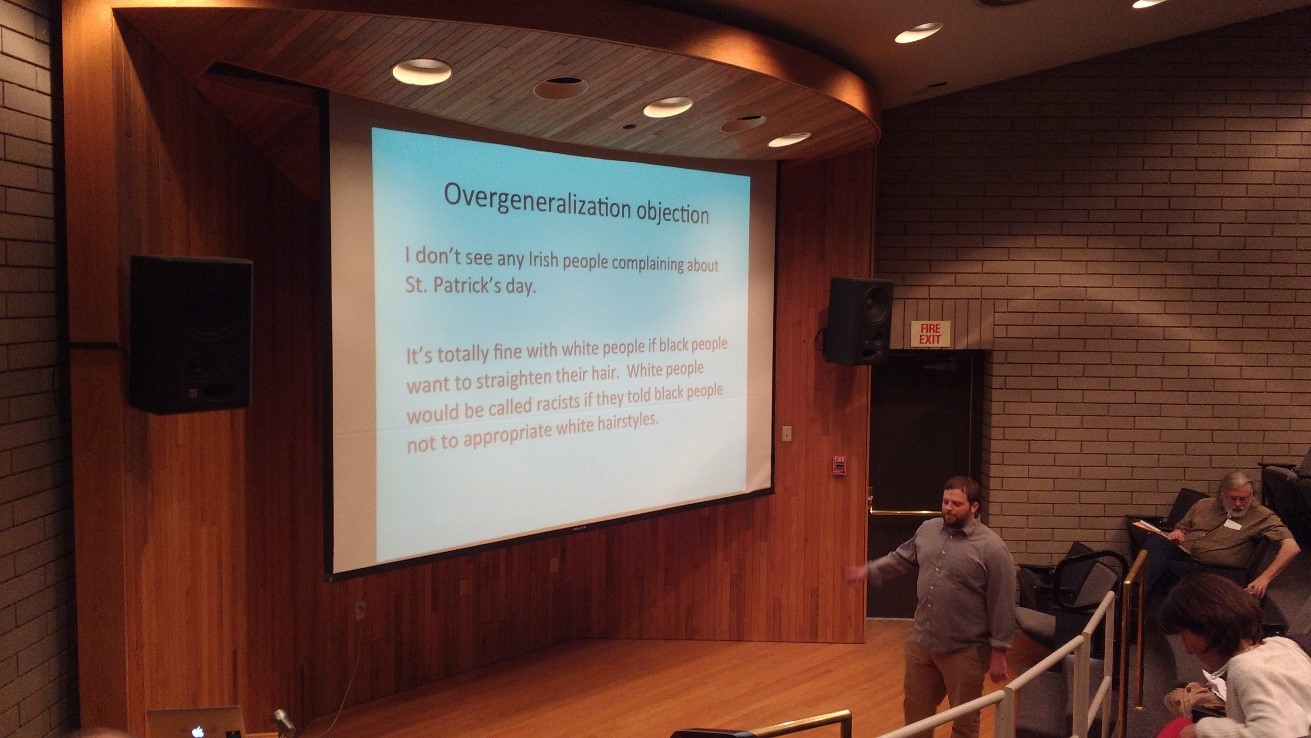
After brief refreshment at The Beerhive, we returned for the keynote by Dominic McIver Lopes (pictured below, “Action is Where the Action is.”) Dom set a challenge: go after claims of aesthetic value, which have been ignored in the past thirty years in favor of figuring out what is good artistically in particular subdomains. The dominant model of aesthetic value reduces aesthetic acts to acts of appreciating items for their own sakes, and having an appreciative experience is valuable because it is a pleasure. The result on this view is that all aesthetic reasons are hedonic.
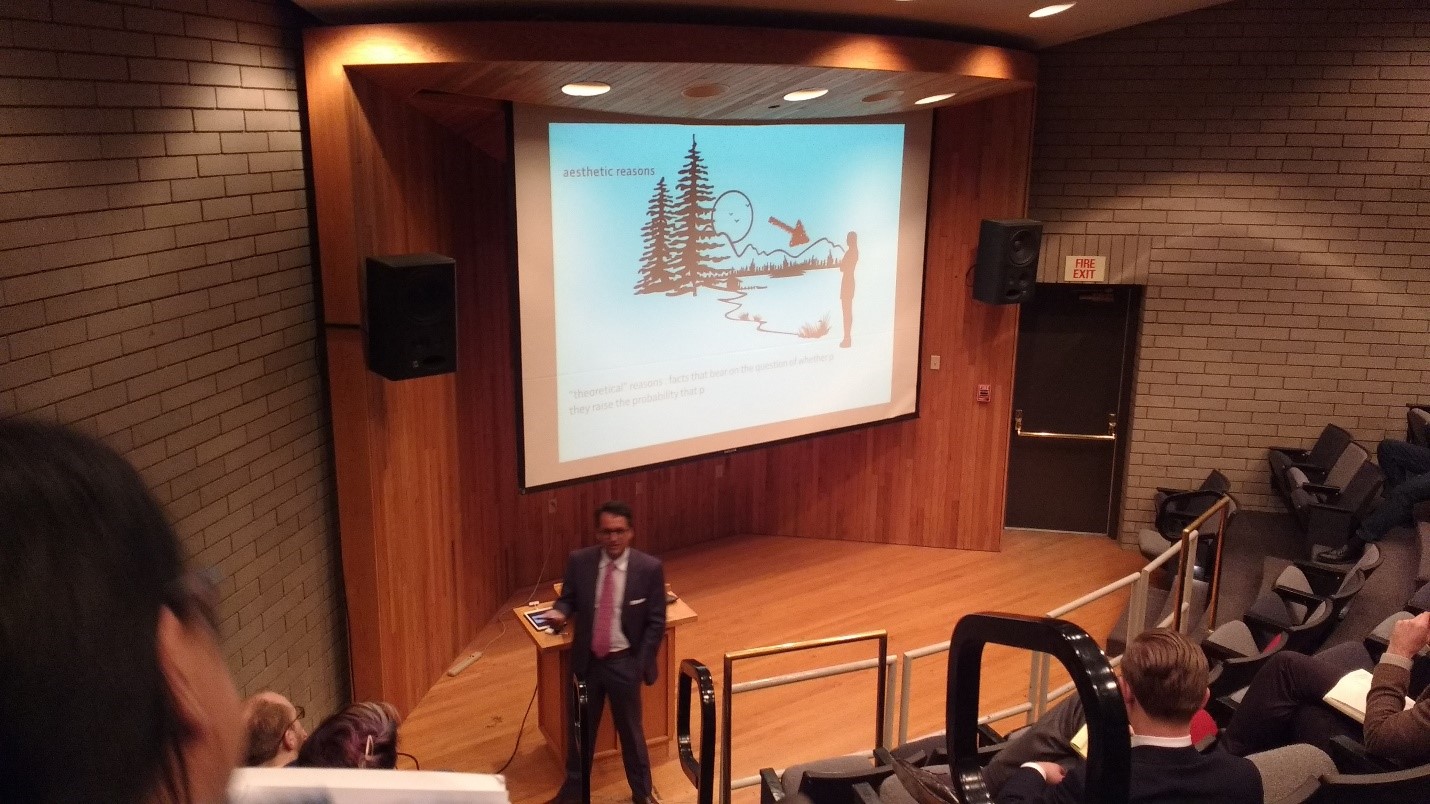
But how limiting – and inaccurate! Dom observes that few aesthetic acts are acts of contemplating items for their own sake. We edit, curate, package, collect, conserve, and restore works of art. Contemplation, and by extension, pleasure, can’t be the whole story, because it’s only part of what we do aesthetically. These acts differ by aims and competencies, and they can be sorted into aesthetic practices and achievements. We then can get aesthetic normativity easily: aesthetic agents (of a kind) have reason to do what an aesthetic agent (of that kind) would do when they achieve. The achiever’s performance sets the normative ideal – action is where the action is.
… Tune in tomorrow for Conference Recap, Day 2!
Notes on the Contributor:
Mary-Beth Willard is Assistant Professor of Philosophy at Weber State University. She works in metaphysics, aesthetics, and early modern philosophy, and has particular interests in street art.


May 26, 2017 at 5:03 pm
Nice report! Note that the ASA contributed $5200 to help make this conference possible.jvancamp5@gmail.com jvancamp5@gmail.com jvancamp5@gmail.com Julie Van Camp
May 26, 2017 at 8:37 pm
They did, indeed! The ASA contributed $5200, and there was also support from the University of Utah and Utah Valley University, and of course UMOCA.